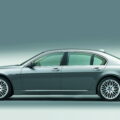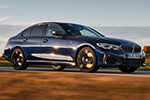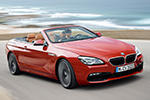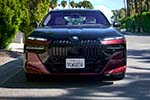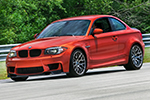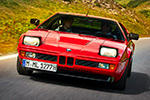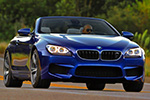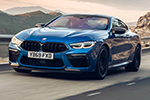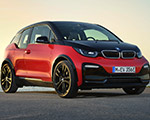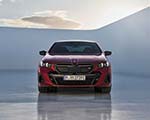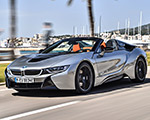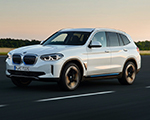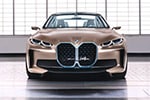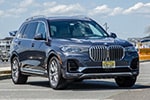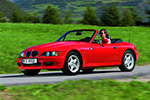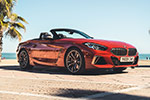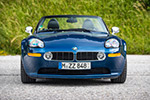 In This Article
In This ArticleBMW has officially entered the Neue Klasse era, a transformation as profound as the original shift that saved the brand in the 1960s. At a recent roundtable, Joachim Post, BMW’s Board Member for Research and Development, spoke candidly about what makes this program a turning point not just for one model, but for the company’s global portfolio. In an extensive Q&A session, he addressed everything from tariffs and supply chain resilience to AI integration, BMW iX3 driving dynamics, and the philosophy behind design and sound.
The Scale of the Neue Klasse
Dr. Post emphasized that the Neue Klasse isn’t about launching a single model but redefining the entire fleet. “The iX3 is the first one, but for the U.S. we’re also bringing the X5 next year, produced in Spartanburg, with all of this technology,” he said. Over the next two years, BMW will roll out the platform’s innovations into around 40 models and updates worldwide.
Central to this shift is the Neue Klasse architecture (NCAR), which introduces four “super brains” — central computers that handle everything from dynamics to driver assistance. With 20 times more computing power than the previous generation, the system allows BMW to separate hardware from software. “That’s one of the keys to being prepared for the future,” Dr. Post explained. “We can integrate more AI features, update more easily, and adapt quickly to what’s coming.”
From Tariffs to Flexibility: Production Follows the Market
Dr. Post also tackled the realities of geopolitics and trade policy. Asked about tariffs, he reiterated BMW’s longstanding position: “We stand for free trade. But we have to prepare for uncertainties.” BMW’s response is to keep a significant footprint in all major regions: Europe, China, and the U.S. That strategy has shaped the mantra “production follows the market, and supply chain follows production.”
Spartanburg, BMW’s largest plant globally, embodies this approach. With a long-term commitment in the U.S., BMW is investing heavily in a new battery assembly facility and expanding production of electrified models. This local-for-local strategy helps BMW remain resilient to tariffs and political shifts, while also anchoring it closer to customers.
Technology That Moves Faster
Automotive development cycles are traditionally long — seven years or more between major generations. Dr. Post admitted that at first glance, starting the Neue Klasse program in 2021 and only now bringing it to market might look slow. But he countered that the real innovation lies in how quickly BMW can spread these technologies across the lineup. “Forty derivatives in two years — that’s real speed,” he said.
The architecture was deliberately engineered to be scalable and transferable to other models, enabling everything from compact sedans to SUVs to benefit from the same computing, safety, and infotainment upgrades. It’s a way of accelerating technology rollout without constantly reinventing the wheel.
Driving Pleasure in the Digital Age
BMW’s slogan — Sheer Driving Pleasure — has always been about feel as much as numbers. Dr. Post made it clear that electrification and software won’t compromise that identity. “It must drive like a BMW,” he insisted. That’s why the company insisted on developing the functional driving software in-house, even if basic layers came from suppliers.
One standout example is regenerative braking. Neue Klasse iX3 models can achieve 95 percent recuperation, making braking so seamless that drivers can’t feel when the car comes to a complete stop. During my own test drive of an iX3 prototype at Miramas, I decided to try something unusual: I briefly closed my eyes as the car slowed to a stop. To my surprise, I couldn’t even tell when the car had fully halted. There was no vibration, no lurch, no sense of mechanical intervention — just a smooth, almost imperceptible transition to standstill. This smoothness reduces fatigue in traffic while also maximizing energy recovery — a win for both driving dynamics and efficiency.
The same goes for dynamics at the limit. On test tracks, BMW engineers let me feel how the computing power and fast reactions of electric motors can keep a car planted in conditions where combustion models would spin. It’s part of what BMW calls the “Heart of Joy” — a fusion of control and emotion made possible by digital performance.
The Panoramic iDrive
The Neue Klasse also redefines how drivers interact with their cars. The Panoramic iDrive stretches information across the width of the windshield, eliminating the constant downward glance at a center screen. “Once you’ve seen it, you say: why didn’t we always do it this way?” Dr. Post said. By projecting critical data directly into the driver’s line of sight, BMW delivers both immersion and safety.
Beyond Hans Zimmer: A New Sound Identity
Sound has emerged as an unexpected frontier for EV identity. BMW made headlines by collaborating with composer Hans Zimmer to create futuristic soundscapes. Dr. Post called the partnership “very successful,” but said Neue Klasse moves forward with BMW’s own philosophy.
Instead of mimicking combustion noise, BMW is crafting human, symphonic tones. One project recorded a choir of designers expressing what Neue Klasse meant to them, then wove those recordings into the car’s sound palette. “It’s not about imitation,” Dr. Post said. “It’s about creating something new, authentic for electric mobility. Some customers will love the sounds, others may prefer silence. There will be something for everyone.”
Global Brand, Local Adaptations
Design is another area where BMW insists on staying true to its roots. When asked by another journalist whether Chinese tastes had overly influenced past models, Dr. Post disagreed. “For us, that’s not true,” he said. “We’ve always created designs that work all over the world, because BMW is a global brand.”
What does change, he explained, are local adaptations for models built in specific markets. In China, for example, customers expect a longer wheelbase and more rear-seat comfort, so BMW produces extended versions of certain sedans there. In the U.S., by contrast, demand leans more toward sport packages and distinctive trims. “These are market-specific adaptations,” Dr. Post emphasized, “but the core design is always global.”
EV Adoption and Market Realities
Finally, Dr. Post addressed the uneven adoption of EVs worldwide. While Europe is moving quickly, the U.S. market is patchier, and infrastructure remains inconsistent. Still, he argued that once customers experience an EV, they rarely go back. “Dynamics, charging speed, range — once you’ve driven an EV, you stay with it,” he said. Neue Klasse models aim to eliminate barriers with 400 miles of range (EPA estimate) and 400 kW charging capability, adding 175 miles in just 10 minutes.
Dr. Post stressed that BMW’s technology-open approach stems from a simple belief: the customer should decide, not governments. “Regulations can set boundaries,” he said, “but in the end it’s the customer who chooses which car to buy.” That’s why BMW opposes outright bans on combustion engines in markets like Germany, preferring instead to offer a full range of options. This flexibility has allowed BMW to lead the premium segment in electric car sales while still reducing overall CO₂ emissions.
The real challenge, Dr. Post noted, is convincing customers to try EVs in the first place — because once they do, they tend to stay with them. Cost reductions from BMW’s sixth-generation battery technology will also make electric models more attractive, both in price and performance. “Some countries move faster, like Europe, others move slower,” he added. “But with the flexibility to build different drivetrains on the same production line, we can adapt to any pace of adoption. That’s the key.”
A Gesamtkunstwerk
Dr. Post used a German word to sum up the Neue Klasse: Gesamtkunstwerk — a total work of art. From design and driving dynamics to software and sound, he sees it as a new level across every discipline. It’s not just a new car but a new standard for BMW’s future, one built on flexibility, digital power, and the enduring promise of Sheer Driving Pleasure.

















